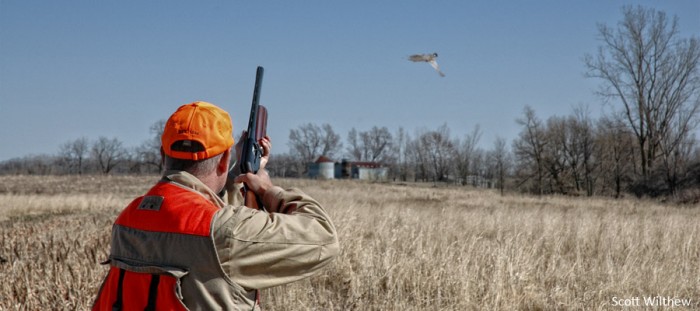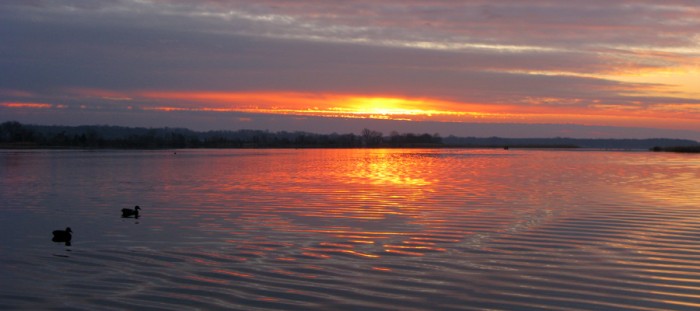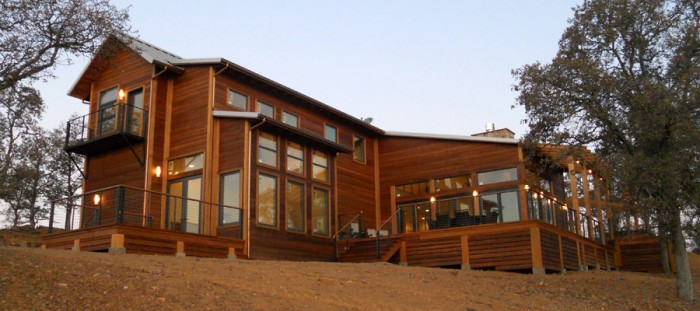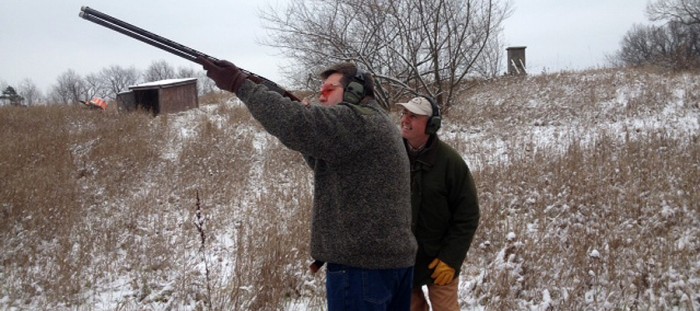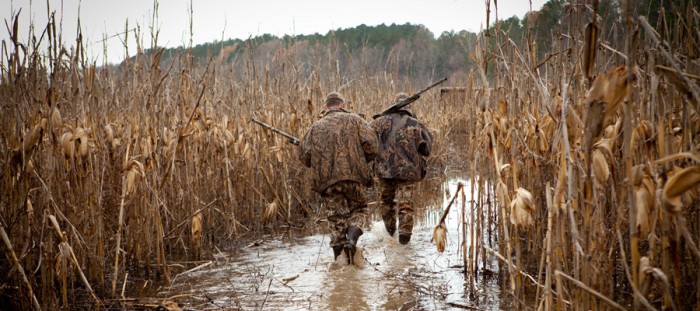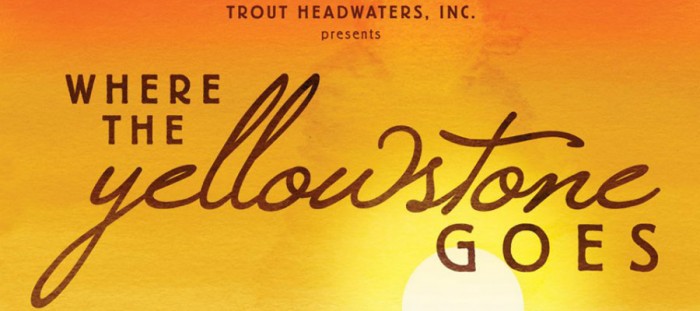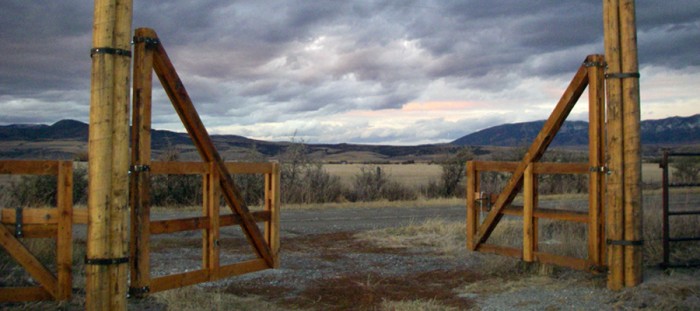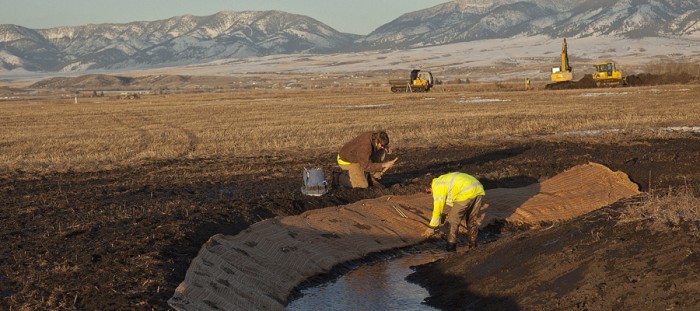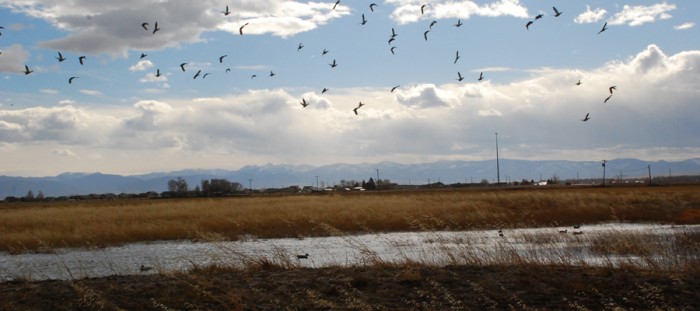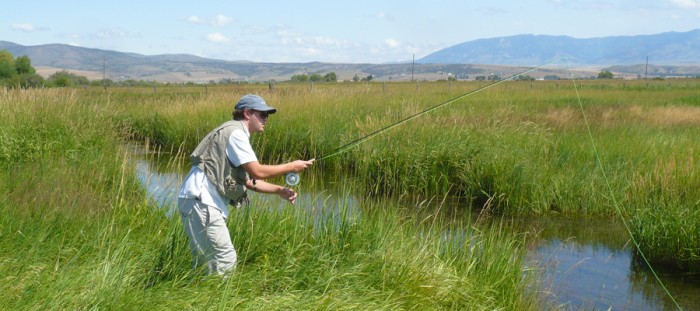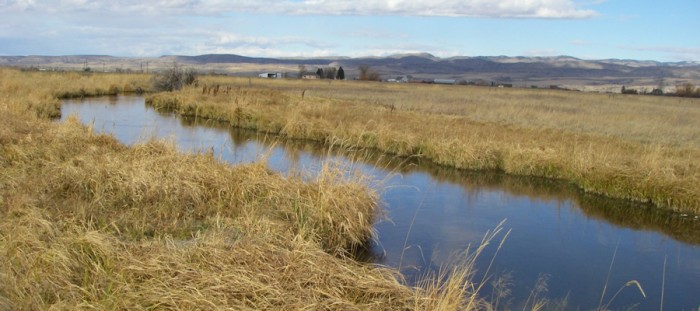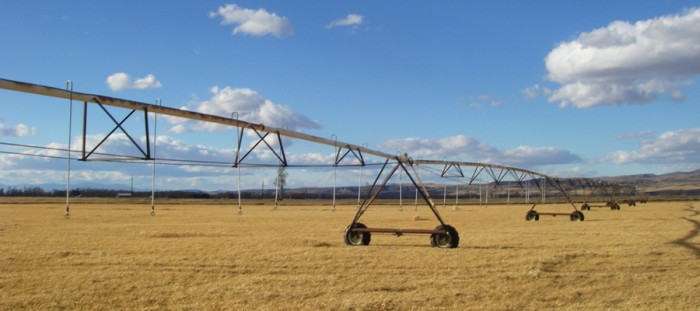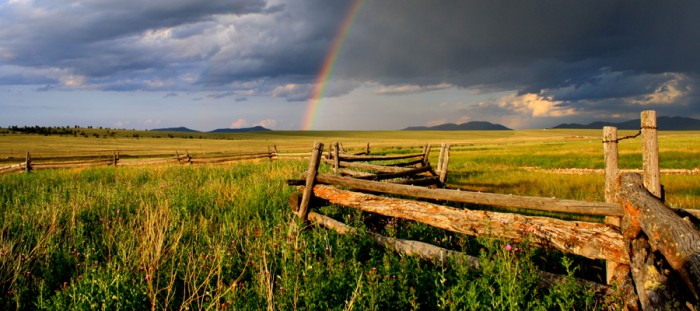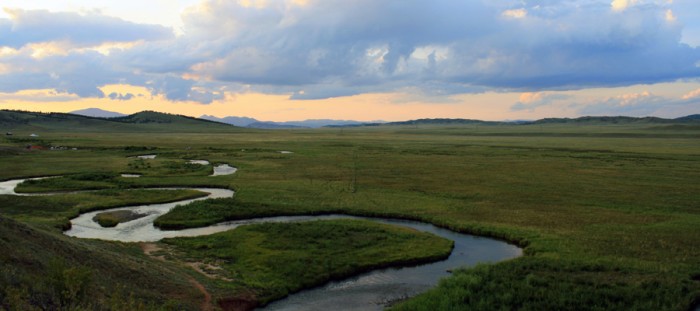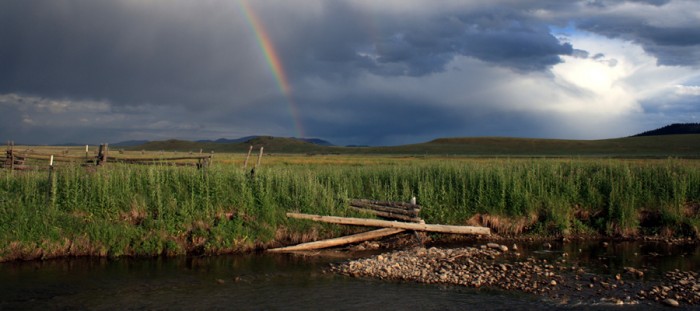For hunters in Iowa, a worrisome decline in pheasant populations has been seen across the state for a number of years. In fact, according to this article from The New York Times, surveys show that the population in 2012 was the second lowest on record, 81 percent below the average over the past four decades.
The reasons for this precipitous drop in pheasant populations are multifaceted. While natural causes like excessively damp weather and animal predators factor into the decline, economic and cultural trends have had a significantly greater impact. Indeed, with rising farm values and commodity prices, landowners across the state (and the nation) have been clearing away prime habitat in order to maximize the agricultural production of their lands. The trend is so widespread that the top seven pheasant hunting states have seen sizable declines in the number of pheasant shot and the number of pheasant hunters over the past five years.
At the same time, and likely because of the rising commodity prices, the amount of land in the Agriculture Department’s Conservation Reserve Program (CRP) has dropped to 29.5 million acres from a peak of 36.7 million in 2007. Under the program, the government pays landowners to plant parts of their land with grasses and other vegetation that creates wildlife habitat.
Luckily for landowners who wish to preserve this habitat, there are many sources of revenue that can be cultivated through the implementation of conservation practices. From programs like the Conservation Reserve Program and many others like it, landowners can receive annual payments from public agencies. Since that same habitat being promoted through the CRP yields prime hunting grounds, landowners can also generate revenue through fishing and hunting access fees. On top of that, landowners can also take advantage of the monetization of ecosystem services on their land. And the list of possible revenue streams goes on and on! (To read more about this topic, check out our two-part series on Investing in Your Legacy.)
If you were able to get outside for a hunt, a ride, or perhaps some fishing during the holiday season, we’d love to hear your stories (and see your photos, of course)!
As we approach the end of the year, we find ourselves reflecting on the past 12 months. It’s been a good year for Field Sport Concepts. We would like to extend our best wishes to all of our valued clients, partners, and friends for a Merry Christmas, Happy Hanukkah, and a New Year filled with joy, peace, and prosperity.
On these cold dark mornings, it may be a bit harder to pry yourselves out of bed and to get going. However, knowing we can look forward to meals of venison chili, roasted duck, and ruffed grouse with wild rice ensures that we are up well before the sun on our days off. Whether you are heading for a duck marsh in Tidewater, Virginia or tracking that elusive buck in south Texas, late fall can be an exciting time of year.
If you are considering large scale improvements for your land, this is a prime time, now that the foliage has fallen and it has not yet snowed, for aerial mapping in order to identify the various elements and landforms of your property. It is also a good time of year for wildlife habitat maintenance such as clearing invasive plant species to support more diverse flora and fauna communities and to increase the value of your land.
Check out Para-Hawking below!
Company News
– Featuring large, gorgeous photography, the new Field Sport Concepts website showcases the affiliates’ world-class land planning, design, and management expertise. Visit website…
– Celebrating the majesty of the Yellowstone River, FSC affiliate Trout Headwaters, Inc. is proud to sponsor the new documentary, Where the Yellowstone Goes. Read more…
– With over 30 years offering shooting instruction, Field Sport Concepts affiliate, John Higgins, is among the best of the best. Read more…
– Benefitting from deliberate and conscientious “firescaping,” FSC affiliate John Blackburn designed ranch survives a wildfire. Read more…
Our Expertise
Emphasizing the human element of conservation efforts, planning for multiple uses on one’s property not only promotes a deeper connection with the land, but also opens up multiple opportunities for ensuring the economic sustainability of the property. Filmed in 1939, the film Sky Game illustrates this timeless concept. Read more…
We are eager to collaborate with you as you seek to enhance your holdings and/or service offerings. Click below to learn how we can help you.
– Field Sport Enthusiasts
– Farm & Rural Land Owners
– Conservations
– Ranch & Farm Brokers
– Equestrian Enthusiats
– Land Developers
In the Field
– Para-Hawking – For millennia, falconers around the world have jealously watched their birds take flight. Benefitting from modern technology, they can now join their hawks in the sky. Read more…
– Restoring H2O to the Southwest – Originally seeking only to purchase a western vacation home, amateur rancher Valer Austin and her husband decided to leave New York City and dedicate themselves to bringing water back to their Arizona ranch. Read more…
– The Dog I Belonged To – Every hunter knows the relationship with his/her pointer transcends the notion of “man’s best friend.” This heartwarming story chronicles one hunter’s relationship with his first bird dog, Lady. Read more…
Thank you for being the cornerstone of our success. We invite you to forward our newsletter and website to anyone you think might be interested in what we are doing or who may benefit from the value-added services we provide.
All the best,
Bob McKee for all the affiliates at Field Sport Concepts.
Benefiting from conscientious and deliberate “firescaping”, FSC affiliate John Blackburn designed ranch survives a wildfire.
With this year’s horror stories about the wildfires across the southwest and California, it is nice to hear a good outcome on occasion. FSC affiliate Blackburn Architects received such an email from one of its clients.
The message notified them that the family’s ranch, designed by Blackburn Architects, PC, found itself in the middle of the Seven Fire, a wildfire that blew through the foothills of the Sierra Mountains on July 10th.
Luckily, the wild fire was first spotted by a plane that was helping fight another fire in the area. According to authorities, the fire destroyed over 800 acres in a very short period of time. Though the entire area around the property was consumed by the fire, the building survived the conflagration due to the defensible space fire protective measures installed during construction.
Defensible space fire protection measures, also known as “firescaping,” are fire control methods instituted in the California code that focuses on the landscaping around a building. The concept targets the area within 100 feet of a structure and emphasizes fuel reduction by specifying appropriate spacing and separation of plant types. Plant selection, segregation, and spacing all play a major role in preventing the spread of fire between different types of vegetation and reducing its ability to reach the structure.
Although the design and installation of the measures tend to add to the initial cost of construction, they have been proven to work. Not only does this help save lives, but it also helps prevent rising insurance costs in the country’s fire prone areas.
With over 30 years offering shooting instruction, Field Sport Concepts’ affiliate, John Higgins, is among the best of the best.
Imagine you’re at your favorite clays course. You have that familiar feeling of your favorite gun tucked against your shoulder. A clay pigeon is loaded in the trap as you regulate your breathing. “Pull!” Following the target along the length of the barrel, you pull the trigger and revel in the feeling of satisfaction as the shattered clay falls to the ground.
Whether you know this feeling well or simply yearn to, every shooter can benefit from the assistance of a world-class instructor. And for members of Hunters Creek Club in Metamora, MI, the opportunity to train with John Higgins is available for a limited time.
Originally from the U.K., John spent 20 years instructing at Yeavley Shooting Grounds in Derbyshire, England. He has spent the last 10 years in the States with the British American Sport Club in northeast Georgia. Responsible for developing many of the nation’s elite shooting facilities and instruction programs, John has had the opportunity to work with shooters of all levels. In fact, as the Chief Instructor for the National Sporting Clays Association, John helped create and implement the national standard for training and certifying shooting instructors in the U.S.
“I have taught every level of shooter and hunter in many different countries and prefer to focus on old school techniques that have over the years proven to be successful. My specialty lies in visual and perception anomalies as well as adaptive techniques for those shooters with disabilities, no matter how small.”
To see some examples of John’s work check out the Shooting Sports and Hunting Environments section of the FSC website Work page. Or, schedule a trip to any of the quality shooting venues he has designed, including The Greenbrier, Blackberry Farm, The Homestead, Brays Island, and Barnsley Gardens.
We recently received an email from a friend inviting us to check out the short film “Sky Game.” Shot in 1939, “Sky Game” highlights the conservation efforts of the McIlhenny family (think: Tabasco) on their Avery Island in the South Louisiana marshes and bayous.
Depicting a campaign to tag and track migratory ducks, the film demonstrates how the family kept tabs on the migratory behavior of the flocks. The tracking also provided a census used to determine annual game laws. Watching the film, we couldn’t help but notice that many of the conservation ideals espoused in this film mirror those of today. (Though, the attire worn by today’s conservationists and outdoorsmen and women has certainly changed.)
Today, Avery Island is a wildlife paradise that is home to thousands of plant and animal species. One species of note is the snowy white egret. Beginning with a population of just eight young egrets, the McIlhenny family raised the egrets in captivity and then released them to migrate across the Gulf of Mexico. The birds returned to the Island the next spring, along with others of their species. Today, thousands of snowy white egrets return each year to the Island’s bird colony, now called Bird City.
Another fine example of a conservation property is The Fork Farm and Stables. At its focus, The Fork boasts a world-class equestrian center. Having played host to the 2008 Olympic equestrian trials for the U.S. team, The Fork is a household name in the equestrian world. With its working competition barn, two all-weather arenas, a cross-country course, and plenty of facilities for camping, The Fork has successfully established a field sport-oriented program that provides the means to preserve the property for the foreseeable future.
What makes The Fork different, however, are the steps the owner has taken to develop additional programming to further ensure the Fork’s future. Recognizing that The Fork could only be truly sustainable if it had the economic resources to support its operation, Field Sport Concepts worked with the owner to identify additional opportunities presented by the land. These include the development of shooting facilities, protection and expansion of habitat for upland bird species, preservation of aquatic habitats for fishing, the establishment of hiking trails, and agriculture.
We are firm believers that such a multifaceted approach to preserving the environment around us is the best way to ensure the long-term viability of rural property. By pursuing a range of compatible programming opportunities, landowners and guests have the ability to enjoy an array of activities, thereby deepening a relationship with the environment. Further, the additional income generated from these activities can come from user fees, government subsidies and tax incentives, or other revenue sources. Such an array of funding sources provides the landowner with options for establishing programming based on his or her goals for the property. The revenue itself can supplement one’s income or can be reinvested in the property’s natural resources and facilities. In other words, as is the case with The Fork, the multiple revenue streams preserve the economic viability of the land and thus ensure its long-term sustainability.
Whether you are looking to protect the family farm, establish a family retreat, or develop a field sport-oriented residential community or resort destination, our multi-disciplinary team of affiliates has the expertise and the experience to help you realize your vision for your land.
And, make sure to check out the short film “Sky Game”.
Celebrating the majesty of the Yellowstone River, FSC affiliate Trout Headwaters, Inc. is proud to sponsor the new documentary, Where the Yellowstone Goes.
The film documents the 600-mile trip with the purpose of celebrating not only the beauty and majesty of the Yellowstone River but also to call attention to the many threats facing the longest undammed river in the continental United States.
Now showing in theaters across the country, Where the Yellowstone Goes, Presented by Trout Headwaters, Inc. captures the profound importance of the Yellowstone River as told by locals met throughout the 30-day adventure. From fisherman to farmers to pilots to homemakers, the river represents everything from one’s first fishing memory to another’s livelihood. Though the stories were as varied as the people telling them, all of those interviewed shared an innate understanding of the importance of conserving this special place. “Our ability to safeguard these rivers and wetlands will be one of mankind’s greatest challenges moving forward,” said Mike Sprague, of Trout Headwaters, Inc.
To learn more about the film, as well as to find out how to attend a screening, check out www.wheretheyellowstonegoes.com. And to see more events that FSC affiliates have sponsored, such as Pink Ribbon Polo and the Ducks Unlimited Annual Benefit, please visit our website’s Resources page.
The Sport of Kings has gained new wings!
For millennia, men and women have been training hawks to hunt wild quarry. Watching the birds take off and capture their prey has inspired countless observers to dream about taking off and flying themselves. Unfortunately, up until recently, such fantasies were just wishful thinking.
The falconers in this video have finally joined their birds in the sky! Indeed, with the help of paragliders, the falconers float hundreds of feet above the ground as their hawks glide around them. It truly is spectacular watching the birds calculate the angle and trajectory they have to take to land on the falconers’ gauntlets as they themselves are flying.
With a massive restoration of Running Colter Ranch completed, the property is now up for sale! With two spring-fed waterfowl ponds and several smaller creeks and sloughs, the ranch represents one of the finest sporting properties available in the Bozeman area. Additionally, its abundance of water for irrigation as a result of Trout Headwater’s work makes it well-suited for productive uses. The ranch is listed by Live Water Properties and is offered as one 696 +/- acre ranch or as two separate parcels. Visit the Live Water Properties listing to learn more about Running Colter Ranch as well as to find contact information for the listing brokers. Read on to discover the value in the restoration of stream and wetlands on Running Colter Ranch.
For most of our nation’s history, we have perceived wetlands as a hurdle on the path to development. As a result, government entities and private organizations alike sought to drain as many as possible. For centuries, the benefits of such policies were easily recognized: increased availability of nutrient-rich agricultural land as well as greater access to lands prime for residential, commercial, and infrastructure development. In fact, up until the 1970s, the U.S. Department of Agriculture considered wetlands drainage a conservation practice under the Agriculture Conservation Program.
It wasn’t until the mid-1980s that wetlands began to be recognized as important ecosystems both for promoting greater biodiversity and for providing ecosystem services such as flood mitigation and water filtration. And today, heroic efforts are being undertaken all across the country to protect and restore some of the largest and most significant wetlands. These include areas like the tidal wetlands of the San Francisco Bay Area, the Mississippi River Delta, and the Great Dismal Swamp.
One particularly successful effort involved the restoration of Running Colter Ranch outside of Belgrade, Montana. Over the past 80 years, the many bodies of water on the ranch were diverted into underground pipes and ditches that were quite deep. Many of the wetlands areas had been filled or dredged. Though these efforts helped to increase the immediate availability of water due to rainfall situations, the long-term consequences were disastrous. Because the water was encouraged to run straight into the pipes, none of it was able to permeate into the ground and recharge underground aquifers. Over the years, the groundwater table dropped measurably, leaving the land parched and devoid of all but the hardiest of plant species.
In 2008, a conservation fund purchased Running Colter Ranch with the goal of restoring the streams and wetlands on the property. Field Sport Concepts affiliate Trout Headwaters, Inc. was hired to lead this effort. THI owner, Mike Sprague, admits that it was hard for him to imagine what the ranch could be when he was first introduced to it. But with its team of water restoration professionals, Trout Headwaters re-engineered the ranch’s streams, bringing the water back to the surface in places. They re-elevated the groundwater table, reintroduced wetlands species, and created habitat that now supports a number of aquatic species as well as migratory birds.
To learn more about Live Water’s Running Colter Ranch, a premier Montana ranch for sale, visit www.LiveWaterProperties.com (link to property).
This post comes from a friend of Field Sport Concepts, Ed Roberson of Mirr Ranch Group. He recently published a post on Mirr Ranch Group’s blog illustrating the economic and environmental benefits associated with implementing conservation practices on one’s land. We invite you to check it out below. You can read more of Ed’s posts at his ranch and conservation blog, Mountain & Prairie.
Since first entering the ranch brokerage business in 2005, I have had the good fortune to work on many deals involving conservation properties – ranches and tracts of land that have either been conserved with a conservation easement or have attributes that make them excellent candidates for conservation. Large tracts of unspoiled land, combined with a deep-seated landowner ethic of respect for the land, make the Rocky Mountain region one of the most creative and cutting-edge regions for land conservation in the United States.
We are currently in the midst of a very exciting time in the history of land conservation, particularly in the Rocky Mountain West. Landowners, non-profit land trusts, government agencies, and innovative entrepreneurs are working together to create solutions that simultaneously conserve land, preserve traditional western ranching and agriculture practices, and create opportunities for investors to reap healthy profits.
One of our current listings, The Preserve, is a perfect example. The entire ranch is 7,859 acres, with approximately 3,500 acres protected by a conservation easement held by Colorado Open Lands. Prior to Colorado Open Lands conservation efforts, the ranch had been overgrazed to the point that the grass was not growing to its full capacity, carrying capacity suffered, and the banks of the Middle Fork of the South Platte had been trampled down, ruining what had been productive spawning grounds for brown trout.
As part of the conservation easement, Colorado Open Lands implemented a responsible and sustainable grazing plan, which allows for the owner of the ranch to continue grazing cattle on the property, just as it has been done since the area was first settled in the 1870s. This grazing plan and easement will have no negative effect on cattle production; if anything, it will be better for the cattle in the long run because the land will produce more healthy grass, year after year.
Thanks to the sustainable grazing plan, the sub-irrigated meadows along the river were green and lush this summer, despite the fact that 2012 was one of the driest summers on record. Also, the Middle Fork of the South Platte, which bisects the conservation easement, has been returned to its natural state as a productive fishery and spawning grounds for 30-inch trophy brown trout.
But what about development potential? What if a potential buyer wanted the option of developing a portion of the ranch? Well, the remaining 4,300 acres of the Preserve is completely unencumbered by the conservation easement. In fact, it has been pre-approved by Park County, Colorado as a Planned Unit Development (“PUD”), which allows for numerous homesites throughout the property.
The Preserve’s combination of conservation, sustainable agriculture, and responsible development potential is a perfect example of how conservation easements can be used to create mutually beneficial solutions that benefit the landowners, the community, ranching heritage, and our western landscapes. While conservation easements may not be the perfect solution 100% of the time, in this particular case, it is a win-win-win for all parties involved.
Every upland bird hunter knows that the relationship with their pointer extends way beyond the notion of “man’s best friend.” Sure, a good bird dog knows the traditional commands of “come,” “drop,” and “whoa.” But after years of training (for both the dog and the hunter), one seems to become an extension of the other. A subtle jerk of the head or shake of the tail conveys so much more than any command ever could.
A recent article from The Contemporary Wingshooter, “The Dog I Belonged To,” offers a beautiful story about the author’s years with his first bird dog, a Brittany Spaniel by the name of Lady. Offering an overview of his efforts to train Lady (and realizing he had just as much to learn) as well as their many years of hunting together, Ron Ellis (the author) paints a picture of a relationship that every dog owner yearns for. In one story, Ellis tells of a hunt in which Lady was pointing toward a small clearing and did not so much as flinch as Ellis approached. Early on in their relationship, Lady had made it clear that when she acted that way, it meant a bird was almost right under her and she didn’t want to scare it away. Sure enough, Ellis says he felt the snow-spray as the grouse took flight.
In another anecdote, Lady once fell down a well during a hunt. Ellis’s friends “graciously” offered to lower him head first into the well to rescue her. As his friends said, “Hey, it’s your dog.” After coming back up, one of the friends’ dogs fell into the same well. The friend looked at Ellis and said, “Hey, you’re already wet.” Back down the well he went.
Whether you’ve read every issue of The Contemporary Wingshooter or this is your first introduction to it, we encourage you to check out their many beautifully written stories about everything wingshooting.
In the meantime, share your pictures of you and your pointer on our Facebook page!

